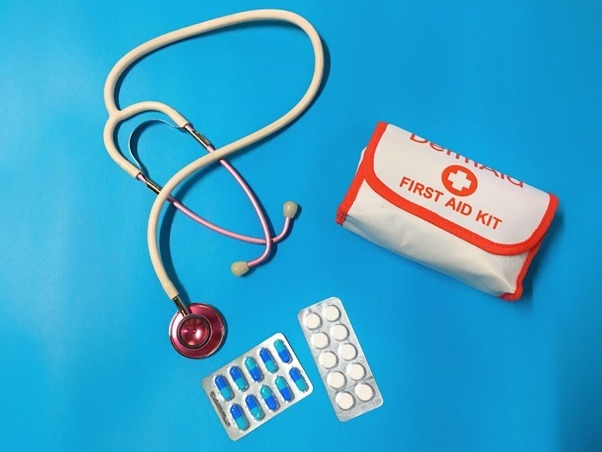Think of a first aid kit as your own little emergency toolbox. It’s a collection of essential medical supplies and equipment that can come to the rescue when accidents happen. Whether it’s a kitchen mishap, a minor injury, or even unexpected emergencies, a well-stocked first aid kit is your best friend.
I know that first aid kits may not be the sexiest thing to talk about, but trust me, when you’re faced with a minor injury or an unexpected accident, you’ll be glad you have them on hand.
Now, let’s get right down to business. Here are the top 10 first aid supplies that I believe everyone should have at home:
Adhesive Bandages
Let’s start with the basics. Adhesive bandages, or as we affectionately call them, “Band-Aids,” are the superheroes of the first aid world. They come in various sizes, shapes, and designs, making them perfect for covering small cuts, blisters, or abrasions. Having a variety of adhesive bandages in your kit ensures that you’re ready for any sized boo-boo.
Gauze Pads and Rolls
When it comes to larger wounds or heavy bleeding, you’ll want to have some sterile gauze pads and rolls on hand. These will help you apply pressure to the wound and control the bleeding until you can seek professional medical help. Remember, safety first!
Antiseptic Solution
Cleaning wounds properly is crucial to prevent infections. That’s where antiseptic solutions, such as hydrogen peroxide or iodine, come in handy. They help kill bacteria and keep the wound clean. Remember to follow the instructions on the label and use them with care.
Tweezers
When you have a splinter or a foreign object lodged in your skin, a good pair of tweezers is your best friend. They make it easy to remove those pesky intruders and save you from discomfort and potential infections. Just make sure to sterilize them before and after each use.
Disposable Gloves
Safety should always be a priority, especially when dealing with bodily fluids or performing first aid on others. Disposable gloves provide a barrier between you and potential pathogens. Keep a box of them in your kit to ensure you’re protected when needed.
Instant Cold Packs
Sprains, strains, and bruises are not uncommon, especially if you have an active household. Instant cold packs provide quick relief by reducing swelling and numbing the area. Just give them a little squeeze, and voila! You’ve got an instant ice pack.
Pain Relievers
Headaches, fever, and minor aches can strike at any time. That’s why it’s handy to have over-the-counter pain relievers like acetaminophen or ibuprofen readily available. Of course, it’s essential to follow the recommended dosages and consult a healthcare professional if necessary.
Medical Tape
When it comes to securing bandages or dressings, medical tape is a lifesaver. It’s lightweight, breathable, and easy to use. Plus, it comes off without leaving a sticky residue behind. Make sure to keep a roll or two in your kit for all your taping needs.
Scissors
Sometimes, you need to cut through clothing or gauze quickly. That’s where a pair of sturdy, sharp scissors comes in. They’re not only handy for cutting, but they can also be used for other tasks like removing clothing from an injured area without causing further harm.
First Aid Manual
Last but certainly not least, a comprehensive first aid manual is an absolute must. It serves as your trusty guide in times of crisis, providing step-by-step instructions for various emergency situations. Keep it in your kit, familiarize yourself with its contents, and you’ll have peace of mind knowing you can consult it whenever needed.
So, there you have it — the top 10 first aid supplies you should have at home. Having these items at home is important because they allow for immediate response, quick treatment, versatility, infection prevention, pain relief, safety precautions, improvised solutions, empowerment, peace of mind, and preparedness for emergencies.
Remember, accidents happen, but being prepared can make all the difference. Being proactive and prepared can make all the difference when it comes to providing timely care and ensuring the well-being of yourself and your loved ones.
Take the time to gather these essential items and create your own customized first aid kit. Additionally, consider taking a basic first aid course to enhance your skills and knowledge.
A first aid course teaches you the correct techniques for applying different supplies from your first aid kit. You learn how to dress wounds, apply bandages, control bleeding, and handle fractures or sprains. Understanding these techniques ensures that you use your supplies appropriately, maximizing their effectiveness.
Remember, a first aid kit is only as good as the person using it. By taking a first aid course, you gain the knowledge and practical skills to utilize your first aid supplies effectively and make a positive impact during emergencies. So, consider investing your time and effort in a first aid course—it’s a decision that can truly make a difference in someone’s life.
